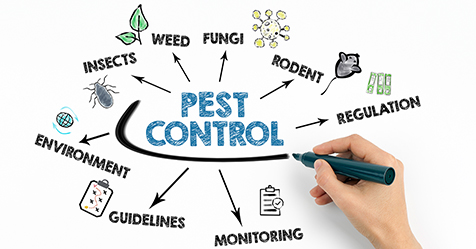Documenting the return on investment (ROI) for sustainability efforts is an important undertaking for facility managers, says Jack McGurk, health care sustainability consultant and president of Systems Improvement Initiators, Inc.
McGurk’s resume runs the gamut when it comes to helping facilities embrace sustainability efforts, from working as chief of the Environmental Management Branch at the California Department of Health Services (now called the California Department of Public Health) to implementing a hospital pollution prevention program and teaching college courses on quality assurance. One of his most recent accomplishments: providing input to IEHA, a division of ISSA, during the development process of its new Sustainability Professional Credential.
CMM recently published an article from McGurk about how to build a widespread sustainability model across an organization. We wanted to dive a bit deeper into this topic, so we asked him to participate in a question-and-answer session on how to track whether an organization’s program is seeing success. Continue reading for McGurk’s tips on how to measure ROI when it comes to sustainability initiatives.
A recent article you wrote for CMM talked about which stakeholders facility managers should engage to help promote buy-in for sustainability efforts. Let’s take this one step further: What type of information should they collect and showcase to help make their case?
JM: Facility managers need to be able to tell the story about sustainability efforts they have implemented. Ideally, they should show before-and-after data that highlights the impact of their project. [For a hospital or health care facility], this could include the reduction in pounds or tons of medical waste, subsequent cost savings through improved segregation of medical and solid wastes, or the introduction of a reusable sharps container program. Following training of cleaning staff, the facility manager could use adenosine triphosphate (ATP) readings of high-touch surfaces to document improvements.
What is the best way for facility managers to gauge ROI in this area? Are there particular tracking methodologies you recommend?
JM: Facility managers must rely on data from many sources to track the efficiency of their sustainability efforts. For example, in health care facilities, working with infection control practitioners to obtain the latest health care-associated infection (HAI) and surgery site infection (SSI) results can document success in efforts to improve cleaning patient care and surgical suites. Similarly, working with quality control staff to document improvements in patient satisfaction scores following cleaning strategy interventions can provide another source of data to confirm program success. Other general improvement interventions for a number of facilities may come through staff training, new product use, ATP monitoring and accountability of cleaning efforts, to name a few. Purchasing and accounting personnel can assist in providing financial information to document cost reductions and calculate return on investments.
What is the most effective way to translate this information and provide it to stakeholders and decision-makers?
JM: Prepare a succinct write-up of the project for key decision-makers documenting the “five Ws,” which includes who did it, what was done, why it was undertaken, where it took place, and when was it done. This document should show the impact achieved by the project, such as reduced HAIs or SSIs, cost savings, improved outcomes, reduction of the carbon footprint of the facility, improved worker safety, or acceptance of a product or practice. The write-up should be sent up the chain of command to the “C-Suite” to document the sustainability efforts and seek buy-in for future efforts.
A white paper documenting the project and outcomes should also be available for anyone wanting more information. Apply for awards from outside organizations, such as Practice Greenhealth; celebrate and publicize any earned awards so the community can feel proud and hold the facility in high esteem.
For a facility manager who is new to implementing sustainability initiatives, where is a good place to start?
JM: Form a cross-functional team representing managers from other functions within the facility. An environmental services manager in a hospital, for example, would want to develop a team with managers from purchasing; infection prevention; nursing; engineering; quality control; and if possible, someone from top administration. These representatives have a wealth of data and information at their fingertips that can assist in driving and documenting success of the program. Together the group should be able to determine what the facility would like to achieve, such as cost containments, reductions in waste streams, improvements to the facility image, or reducing employee injury claims.
Do you have any sustainability success stories to share?
JM: One of the best returns on investment I’ve witnessed was a switch from surgical blue wrap to hard cases for the surgical equipment sterilization process. One hospital spent approximately US$35,000 on hard cases, which reduced their use of Blue Wrap by 70 percent and saved an additional $500 per week in not having torn sets of blue-wrapped bundles that had to be rewrapped and sterilized. The ROI was achieved in 8.2 months and will continue to be realized throughout the 10 or more years of life of the hard cases.
In your professional experience, what are the most common misconceptions when it comes to rolling out sustainability efforts?
JM: Sustainability efforts take time; they don’t happen overnight. Sustainability programs need a champion within the organization to see the program moves forward and is supported by top management. Also, sustainability efforts need to be fed. The hierarchical pyramid needs to be inverted so those on the top can hear input from their workforce who often hold the frontline knowledge of what changes can be made for a successful outcome.



